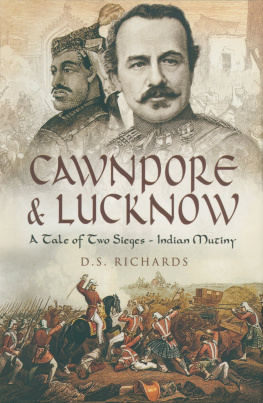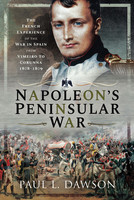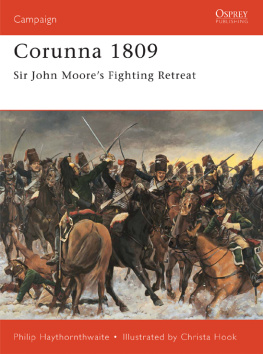TO RICHARD GUILDEN CLARKE
First published in Great Britain 2002 by
LEO COOPER
an imprint of Pen & Sword Books Ltd
47 Church Street
Barnsley, South Yorkshire, S70 2AS
Copyright 2002 by D. S. Richards
ISBN 0 85052 919 0
ISBN 9781783400478 (epub)
ISBN 9781783400218 (prc)
A CIP record for this book is available from The British Library
Typeset in 10.5/12.5 Plantin by
Phoenix Typesetting, Ilkley, West Yorkshire.
Printed by CPI UK
PREFACE
A wealth of material exists for the student of the Napoleonic Period in the diaries and journals of the junior officers and men who formed the spearhead of Britain's Peninsular army. Many of their memoirs have recently been reproduced in facsimile.
In my description of the campaigns in the Peninsula and the south of France I have drawn upon the experiences of some fifty-six combatants and non-combatants which I am sure will provide added interest and colour to the narrative and give an insight into the vicissitudes of a redcoat's life, including the comradeship, which at times extended even to the enemy.
Previous to Waterloo, Wellington was asked his opinion as to the likely outcome of the battle. Pointing to a private soldier, the Duke replied, It all depends on that article whether we do the business or not. Give me enough of it and I am sure.
Despite the seemingly disparaging terms he employed, Wellington knew full well that the redcoats he had commanded in Spain and Portugal enjoyed a reputation second to none in Europe, never having suffered a major defeat at the hands of the French.
Wellington's other notorious remark, that the army was composed of the scum of the earth, is also open to misinterpretation when it is considered that the majority in the ranks was largely recruited from the criminal classes, the impoverished and the many who enlisted for drink. The Duke's true feelings were revealed when he added, It is really wonderful that we should have made them the fine fellows they are.
The contrary nature of the man in the ranks is no better illustrated than during the long and arduous retreat to Corunna and Vigo with its accompanying scenes of drunken and brutal behaviour, in sharp contrast to the feats of outstanding courage demonstrated in the battle of Albuera and the murderous assault against the fortress of Badajoz where even Wellington was reduced to tears after witnessing the destruction of his elite division in the Great Ditch. His redcoats were truly, as that great military historian Sir William Napier described them, astonishing infantry.
In acknowledging the help I have received in the compilation of this work, I would particularly like to thank Mr. Jamie Wilson of Spellmount Publishers for allowing me to quote from the letters of Ensigns William Thornton Keep and John Mills, published respectively in the books In the Service of the King and For King and Country. The illustrations in this book, together with the jacket cover, are reproduced by the kind permission of the National Army Museum. For his excellent map of the Peninsula as it was in the 19th Century my thanks are due to Mr. John Mollo for allowing me to reproduce it from his book The Prince's Dolls and for the detailed campaign maps accompanying the relevant chapters, I am indebted to Lt. Colonel Sir Julian Paget.
I should also like to express my appreciation of the help afforded me by the British Library and the National Army Museum at Chelsea, without whose research facilities this book would never have been completed. My thanks also go to Tom Hartman for bringing the maps to my attention and for his assistance in preparing this book for publication.







